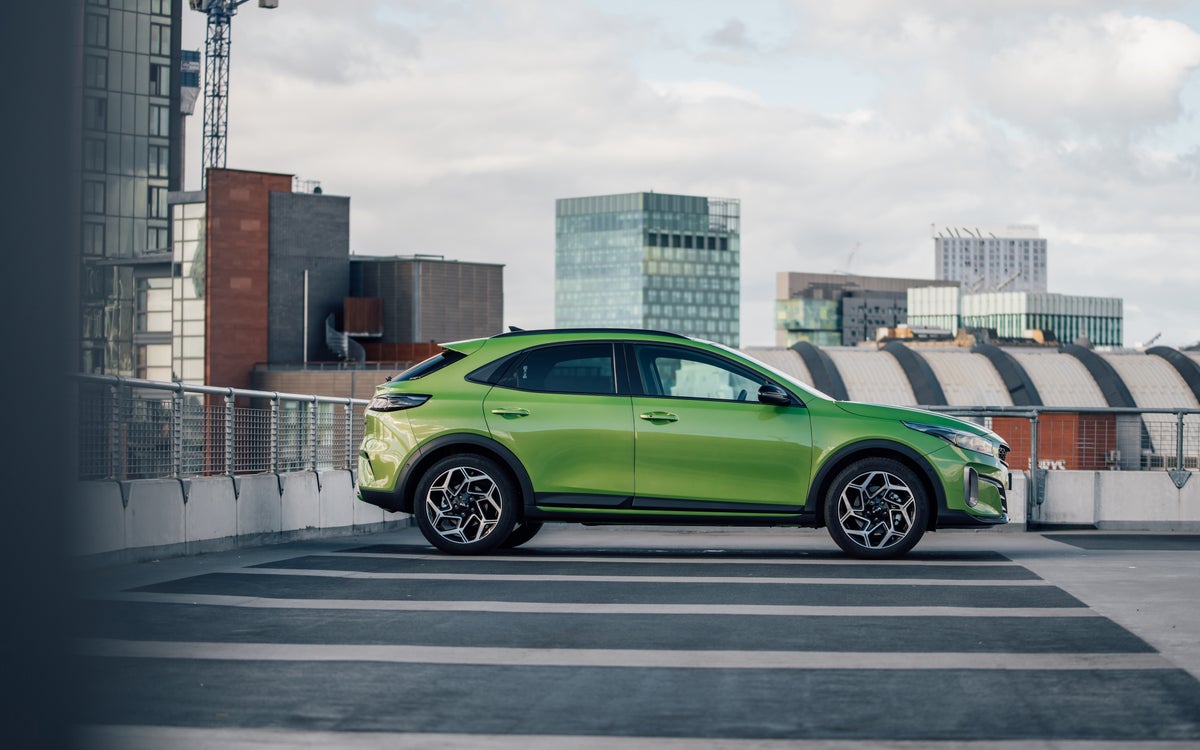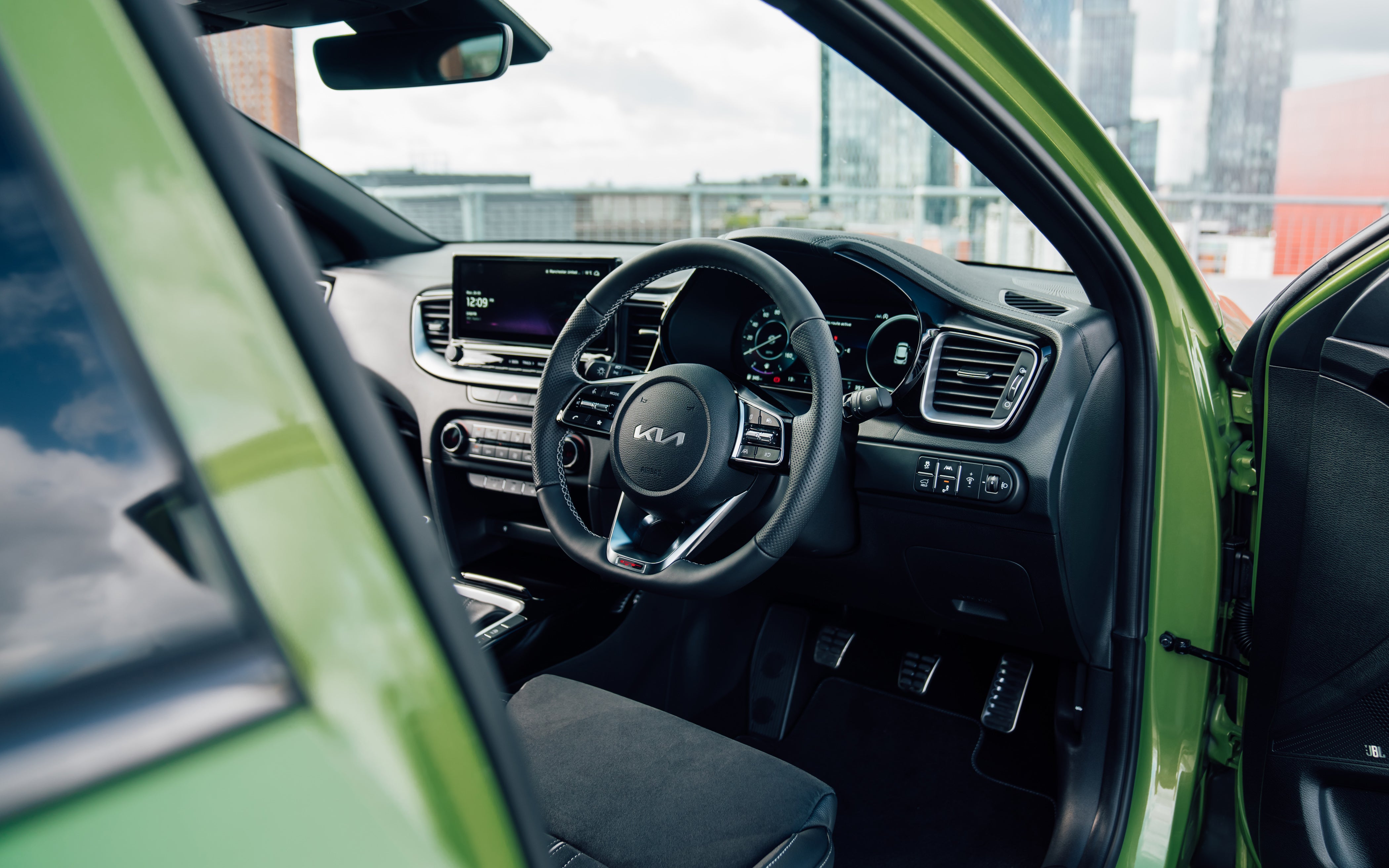
Without getting too “Denis Norden” about things (and if you remember him you’ll understand what I’m on about), if you’re one of those people who’ve got to an age when you’re more interested in how long it takes for you to get into a car rather than how long it takes the car to get to 100mph, then the Kia Xceed is ideal for you. This is because, being built a little higher (44mm) than a standard hatch such as the Kia Ceed, which it’s based on, it’s just very easy to hop on and out of. No effort at all, really, with it’s nice wide doors opening out at a generous angle.
The Xceed is built for the convenience of an ageing population, who tend to be the only people able to afford new cars, so that’s clever of Kia, isn’t it? It’s not so high up that you need a step-ladder to clamber in, like a Range Rover, nor so low down that you worry about how you’ll ever get out of it, like, say, a Caterham. It’s just right. And the top speed is 99mph, so you don’t need to fret about that in any case (where legal, obvs).
The rest is pretty pleasant too. In industry parlance, this is a “new” car rather than an “all-new” car, which means that it’s not that radically different from its predecessor Xceed, which dates back to 2018. There are some new controls and screens on the dash, and they’ve redone the styling front and rear, and added some stylish LED lights all round. But the basic shape dates back a few years and is a cross between a hatch, a coupe and a small SUV. Kia took its standard Ceed hatch, added black plastic wheel arches, bigger bumpers and silver roof rails, and a bigger boot to endow it with a vaguely SUV stance. It’s thus more car-like than the Volkswagen T-Roc or Seat Ateca, for example.
It’s also fair to say the Xceed looks a little tame next to some rivals such as the Toyota C-HR or Renault Arkana and not as contemporary as the Peugeot 3008. However, Kia does offer some lurid paint jobs to compensate.
THE SPEC
Kia Xceed 1.6 GDI 3 PHEV
Price: £32,995 (as tested; range starts at £22,395)
Engine capacity: 1.6l petrol, 8-sp auto + elec motor
Power output (bhp): 139
Top speed (mph): 99
0 to 60 (seconds): 10.6
Fuel economy (mpg): 201 (inc battery-only use)
CO2 emissions (WLTP, g/km): 32
Kia has also added extra sound-deafening and “quiet wheels”, so it’s mostly an even more refined package than it was before. The climate and radio controls are sensibly placed, on the dash and handily on the steering wheel as well, and there’s usually no need to fiddle with the touchscreen on the move. The materials, especially on the higher trim levels, are all excellent soft-touch stuff, and while conservatively trimmed in a mix of matt and piano black, the interior is a nice sort of place to be. It feels like the factory in Slovakia has taken the trouble to build you a high-quality product (this also being a European design and tailored to European tastes and, this case, the softer suspension set up to deal with rough British roads).
My particular test car was the PHEV (Plug-In Hybrid Vehicle) version, which is a sort of niche within the niche the Xceed has cut out for itself. On the plus side, on a certain pattern of use, the Kia Xceed PHEV will hardly use any “fuel”, as you can get about 30 miles of gentle driving out of it in electric-only mode, suitable for many commutes (and even better if you can plug in at work for free). It also delivers a notable tax advantage for benefit-in-kind business users, who could be about £800 or £1,600 a year better off compared with a petrol-only equivalent, and car tax is lower.

On the other hand, the initial premium for the PHEV Xceed is about £7,000, and the battery pack and electric motor add 200kg to its weight. If you do longer journeys in it, or don’t bother to plug it in, the penalties on fuel economy will be significant. So it’s a niche product in more ways than one. I also have to say that the hybrid setup has plenty of power, but it makes a bit of a whine when you put your foot down. And the thick rear pillars compromise visibility (parking cameras and sensors compensate, to an extent). The claimed mpg of 200 is a bit fanciful, and based on extensive use of the car in electric-only mode (at 30 miles per recharge).
By now we should all be familiar with Kia’s seven-year warranty and growing reputation for quality, reliability and durability, and its customers are usually among the happiest in the satisfaction surveys. I’d counsel, however, that while the Korean firm is perfectly competitive in traditional sectors such as family hatches and SUVs, and at Peugeot levels of quality (which is good), its real edge is in its burgeoning all-electric products, including the e-Niro and EV6, all with excellent real-world range. They’re quite easy to get in and out of too, by the way.







